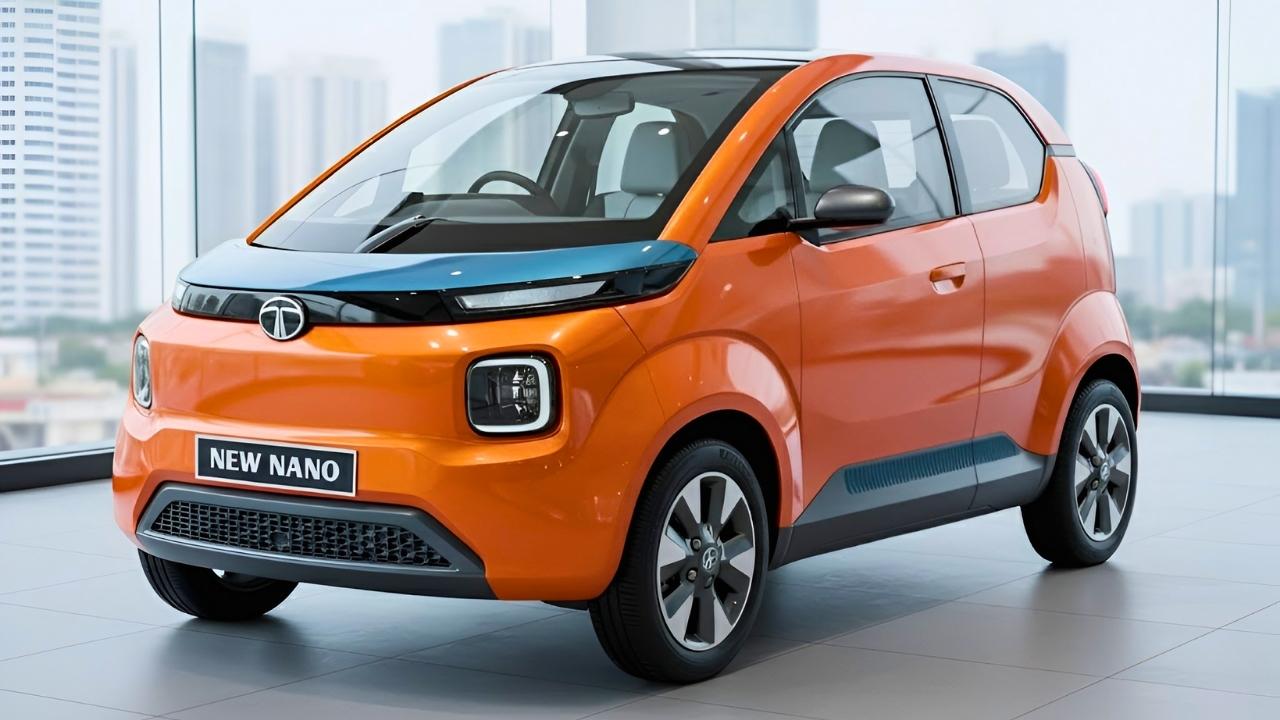Tata Nano EV 5N Launched – Imagine an electric hatch that enables you to join India’s EV revolution yet costs less than many petrol cars. That’s the promise of Tata’s all-new Nano-EV, which is said to bring an unprecedented combination of range, smart technology and affordable pricing under one roof. With its bold claim of a 490 km driving range, AI-smart tech and up to 35 % subsidy potential, this car aims to democratise electric mobility in India a real “people’s EV” for the masses.
Price & Subsidy
Tata’s Nano-EV reportedly enters the market at India’s lowest EV cost tier, made possible through generous central and state subsidies. Buyers may benefit from up to 35 % off the on-road price via the FAME II scheme and state-level incentives. By bringing effective cost well below many conventional hatchbacks, this pricing strategy could unlock EV ownership for first-time buyers, students and urban commuters alike.
Range Claim
The standout headline figure: a claimed driving range of 490 km on a single charge one of the highest in its class, especially for an entry-level car. If backed by certified testing, this figure far exceeds typical budget EVs in India. While real-world urban range may differ, the headline number gives strong positioning and consumer appeal for those wanting long-distance peace of mind even from a compact electric hatch.
Battery & Powertrain
Although Tata hasn’t officially released full specs yet, industry commentary suggests the Nano-EV will leverage a lithium-ion battery pack optimised for value and range, paired with a front-motor drive layout. Estimated capacity ranges from ~20 kWh to ~30 kWh in leaked reports; motor output may likely be in the modest city-car bracket, designed for efficient everyday commuting rather than high performance.
Charging & Efficiency
The Nano-EV is expected to support both home-charging and public rapid-charging modes. Home AC charging may take ~5-8 hours for a full top-up, while fast-charging capability (10 %→80 %) may take around ~30-60 minutes on compatible DC chargers. Efficient energy consumption, regenerative braking and urban-optimised tune-up further enhance its value for daily commutes and apartment-dweller situations.
Technology & Smart Features
Smart tech is a strong focus for the Nano-EV. The car is expected to include connected-car features such as mobile-app integration, over-the-air updates, voice assistant, digital dashboard and touchscreen infotainment with Android Auto/Apple CarPlay support. With AI-augmented assistance (for navigation, energy management, alerts) and Tata’s EV ecosystem services, even budget buyers get a modern smart-car experience.
Safety & Practicality
In an era when affordability often means compromises, Tata appears to prioritise safety and practicality. Early reports suggest dual-airbags, ABS with EBD, reinforced body structure, ISOFIX child-seat anchors and parking sensors/camera. The compact dimensions make it ideal for tight city roads and narrow parking spots, while the hatchback layout remains practical for four-passenger use.
Design & Space
The Nano-EV retains the compact charm of the original Nano but with an electric age refresh. Expect a short bonnet, tall cabin for head-room, and city-friendly footprint enabling easy manoeuvring. On the inside, smarter packaging enables rear leg-space, foldable rear seats for cargo flexibility, and modern finishes. Urban buyers will appreciate how it takes minimal road space yet provides full utility.
Ownership Costs
One of the biggest advantages of owning an EV is the dramatically lower running cost no petrol, fewer engine moving parts, less maintenance. With this Nano-EV’s modest battery size and urban-driving bias, expected annual costs could be much lower than a small petrol hatch. The 35 % subsidy (or even more via state schemes) further lowers the upfront investment, making the lifecycle cost compelling.
Target Audience & Roll-out
The Nano-EV is targeted squarely at first-time car buyers, young professionals, urban couples and families seeking a second vehicle for city use. It also appeals to fleet operators who want low-cost EVs for last-mile services. Launch is expected in select metros first (Delhi, Mumbai, Bangalore, Chennai) with phased national rollout. Tata dealerships and online booking platforms will drive user adoption.
Conclusion
If the claims hold up, Tata’s Nano-EV could genuinely be India’s most affordable four-wheeled electric car offering 490 km range, smart tech and massive subsidy-backed value. While final specifications, pricing and availability are awaited, it’s a compelling step toward mass-EV accessibility. For urban commuters wanting to ditch petrol and upgrade to electric without breaking the bank, this hatch might just hit the sweet spot.



